 Return to
Return toAviation Answer-Man
Gateway
 Return to
Return to
Aviation Answer-Man
Gateway
 Return to
Return to.
Chapter 9:
But what about... ?
~~~~~~~~~~~~~~~~~
Copyright 2000 by Richard Harris
All Rights Reserved
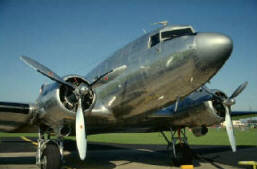
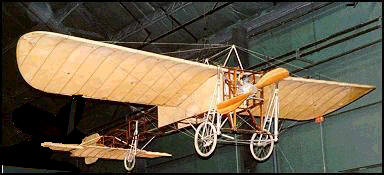
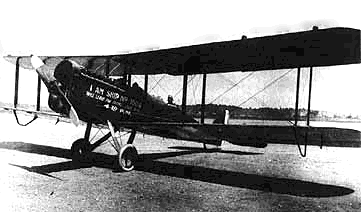
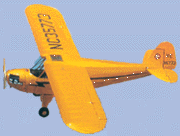
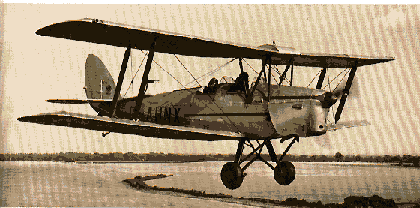
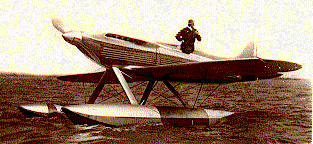
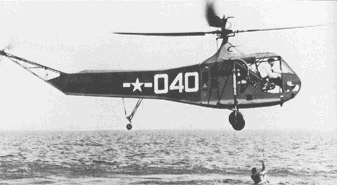
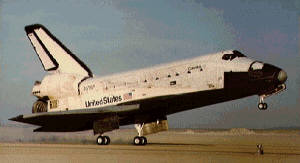
_______________________________________
Whenever anyone presumes to cite a particular outstanding few, it inevitably begs the question "But what about so-and-so?" It's a daring and dangerous thing to exclude some popular greats from a list of "decisive greats." People have their favorites. And heroic myths of national pride and personal achievement have grown up around some of them. Airplanes are more than flying machines: they are icons of power, danger, personal risk and excitement, and symbols of excellence. The very existence of anything that can fly through the air, under human control, while carrying people and their belongings, is a stunning achievement.
 To question the significance of any flying machine is to invite contempt, riducule and resentment -- or worse. But, by definition, only a few aircraft can have been truly "decisive." To do justice to history, and human understanding of it, an honest historian grits his teeth, and tells it like it is (as best as he or she can tell).
To question the significance of any flying machine is to invite contempt, riducule and resentment -- or worse. But, by definition, only a few aircraft can have been truly "decisive." To do justice to history, and human understanding of it, an honest historian grits his teeth, and tells it like it is (as best as he or she can tell).
And so I screwed up the courage to make the call on these eight planes (when I started the research for this report, I started with no specific number in mind; history indicated the number). If it comes as a consolation to the disappointed, I had to scratch some of my own very favorite aircraft from the list, and it hurt a bit -- so I have some understanding of how you might feel, if your favorite(s) didn't "make the cut." Still, some disagreements just won't go away gracefully, so here's an answer to some of the most predictable protests.
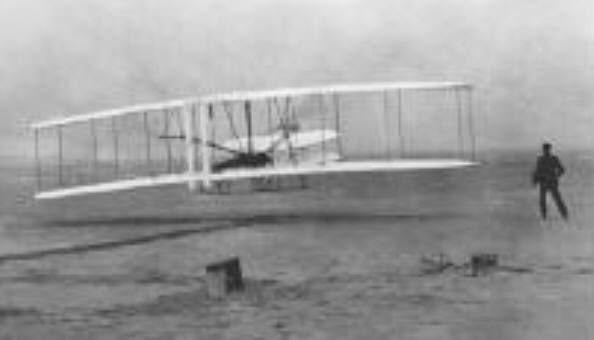 The Wright Flyer? Certainly this "aeroplane" (as they were called then) was a heavy contender for the list of all-time greats. It filled a critical gap in the path towards discovering how to have controlled flight. But the only decisive influence of the Wright brothers was in the invention of roll-control. As bicycle experts, the Wright brothers were uniquely qualified among early aviators to notice the need for balancing turns with corresponding banking into the turn, just as on a bicycle.
The Wright Flyer? Certainly this "aeroplane" (as they were called then) was a heavy contender for the list of all-time greats. It filled a critical gap in the path towards discovering how to have controlled flight. But the only decisive influence of the Wright brothers was in the invention of roll-control. As bicycle experts, the Wright brothers were uniquely qualified among early aviators to notice the need for balancing turns with corresponding banking into the turn, just as on a bicycle.
This was the last essential missing element in the development of flight technology. But there had been many other equally important elements that had come before -- elements that had been discovered by other aviators, and flown on other aircraft (including the gliders of Lillienthal and Chanute, and aeroplanes by a half-dozen other inventors -- aeroplanes that flew without roll control before the Wright Flyer, but actually flew nonetheless).
 Virtually all other features of the Wright Flyer were reflected in earlier designs by other aviators. True, the Wright Flyer brought many of the best ideas together, including yaw-control and pitch-control. But the Wright Flyer's only important and durable original aspect was roll-control.
Virtually all other features of the Wright Flyer were reflected in earlier designs by other aviators. True, the Wright Flyer brought many of the best ideas together, including yaw-control and pitch-control. But the Wright Flyer's only important and durable original aspect was roll-control.
Other planes had flown before without it, and it was only a short matter of time before the need for roll-control -- the third and final axis of flight control -- became obvious to everyone engaged in the race to build a controllable airplane. In fact, the Wright brothers' roll-control solution -- wing-warping -- turned out to be a poor solution, soon eclipsed by the much more practical use of ailerons (small, pilot-controlled flaps on the outer trailing edge of each wing) for roll control. The Wright Flyer, according to most experts in the know, had awkward roll-control, and worse pitch control -- and was tricky and dangerous to fly.
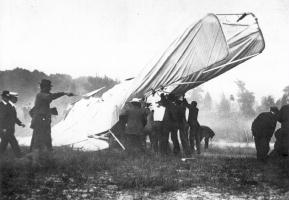 In fact, almost every other aspect of the Wright Flyer was woefully deficient and soon obsolete: no fuselage; skids for landing gear; catapult-launch needed for take-off; engine behind pilot & passenger (dangerous in a crash); giant chain-driven pusher propellors (vulnerable to countless problems, including one which caused the first fatal plane crash, shown at right); inefficient twin rudders and elevators; canard elevators (in front of plane; blocking pilot's view). And the Wright Flyers were generally so slow (40mph) that -- at full throttle in a stout wind -- the plane could be passed by fast runner or a slow horse. Where, one might ask, is the value in such a machine? In truth, the Wright Flyer was a great leap ahead from a total absence of controlled flight. But the Wright Flyer's controllability was marginal, and its utility was the same. (In time, even the Flyers' concept of biplane wings would be proved inefficient and obsolete).
In fact, almost every other aspect of the Wright Flyer was woefully deficient and soon obsolete: no fuselage; skids for landing gear; catapult-launch needed for take-off; engine behind pilot & passenger (dangerous in a crash); giant chain-driven pusher propellors (vulnerable to countless problems, including one which caused the first fatal plane crash, shown at right); inefficient twin rudders and elevators; canard elevators (in front of plane; blocking pilot's view). And the Wright Flyers were generally so slow (40mph) that -- at full throttle in a stout wind -- the plane could be passed by fast runner or a slow horse. Where, one might ask, is the value in such a machine? In truth, the Wright Flyer was a great leap ahead from a total absence of controlled flight. But the Wright Flyer's controllability was marginal, and its utility was the same. (In time, even the Flyers' concept of biplane wings would be proved inefficient and obsolete).
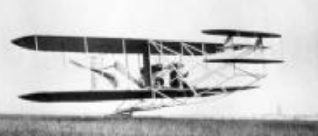 As late as early 1909, their Flyer still needed a catapult, and had no wheels, with its many awkward features virtually unchanged in half a decade. Compare the 1909 Wright Model A, at left, with the 1909 Bleriot Model XI below, right, and the Wright Flyer's quick obsolescence becomes blatantly clear.
As late as early 1909, their Flyer still needed a catapult, and had no wheels, with its many awkward features virtually unchanged in half a decade. Compare the 1909 Wright Model A, at left, with the 1909 Bleriot Model XI below, right, and the Wright Flyer's quick obsolescence becomes blatantly clear.
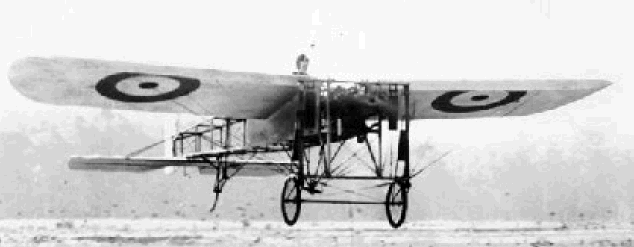 The Wrights still clung to their obsolete design, and used their notoriety to hold onto power in the development of aviation. They jealously guarded the secrets of their discoveries, while other pioneers (including those from whom the Wrights had learned) openly shared their knowledge with the world.
The Wrights still clung to their obsolete design, and used their notoriety to hold onto power in the development of aviation. They jealously guarded the secrets of their discoveries, while other pioneers (including those from whom the Wrights had learned) openly shared their knowledge with the world.
(The classic example of the Wrights' attempts to control aviation to their advantage was the Wright-vs-Curtiss lawsuit -- a long and bitter legal battle over the rights to flight technology, against fellow American and aviation pioneer Glen Curtiss. The lawsuit ultimately served neither side, nor the progress of aviation.)
While the Wrights piddled and feuded, independent geniuses -- like Louis Bleriot -- moved ahead, and others created modern practical airplanes. Small wonder that the Wright's experience as airplane manufacturers was very short-lived. And though the 1909 Bleriot design -- which would become the first military airplane in Europe -- lasted into service in World War I (half a decade later), the antiquated, quirky 1909 Wright Model A was soon abandoned by everyone, including the U.S. military. At most, the Wright Flyer moved aviation ahead by five years -- significant, but not decisive.
Had the Wright Flyer never been built, within a couple of years another one of the several flying machines of the day -- with the inevitable discovery of roll-control -- would have flown successfully in fully-controlled flight, and aviation's progress would have quickly come up to speed. Either way, the Wright design would not have lasted long as a basic design for airplanes -- while the Bleriot XI's overwhelming design influence continues to this day.
And why not the record-breakers?
Why not airplanes that are famous for record-breaking and daring flights -- like the Lockheed Vega or Charles Lindbergh's Spirit of St.Louis?
These airplanes are significant, but seldom played a decisive, pivotal role in aviation growth, or in world affairs. Many had major competitors -- such as the roughly-equal Ford and Fokker tri-motor transports used for various famous flights of exploration and adventure. Others were one-of-a-kind exceptions to the norm, or modified so much from the normal design that they were impractical airplanes for common use. Indeed, some -- particularly race planes -- actually served to make flying appear more dangerous, and reduce its credibility and public support. Though these speed machines fascinated the public with their accomplishments, they also made it look suicidal to fly in them, which it often was).
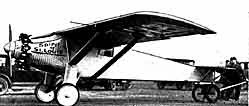
The Spirit of St. Louis
To be sure, Charles Lindbergh's monoplane, the Spirit of St. Louis, was the first aircraft to clearly bring credibility to the monoplane concept since Bleriot's Model XI crossed the English Channel in 1909.
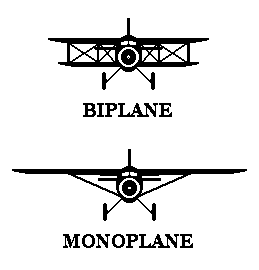 When Lindbergh took off for Paris in 1927, biplanes (planes with two wings) were assumed to be stronger and safer than monoplanes (planes with one wing). The complex tangle of wires and struts that held the biplane's wings in place (and together) produced a lot of drag, but created a stout structure, like the, steel truss of a railroad bridge.
When Lindbergh took off for Paris in 1927, biplanes (planes with two wings) were assumed to be stronger and safer than monoplanes (planes with one wing). The complex tangle of wires and struts that held the biplane's wings in place (and together) produced a lot of drag, but created a stout structure, like the, steel truss of a railroad bridge.
However, another source of drag the biplane suffered greatly from was the wasted lift and increased drag caused by the tendency of high-pressure air to slip out from under each wing, sideways, and spiral off the wingtip to produce tiny, horizontal tornadoes trailing behind each the wingtip, dragging on the airplane. This "induced drag" was reduced in monoplanes, which -- compared to biplanes -- had half as many wingtips to produce drag. The one, long "monoplane" wing proved more efficient than a short pair of "biplane" wings.
With the reduction in drag and weight, the monoplane could get by with a smaller, less-thirsty, less-expensive engine (the most expensive part of the airplane), or simply go farther and faster on a given size of engine. Lindbergh's customized Ryan "NYP" ("New York-to-Paris") monoplane, blessed by the low drag profile of its single wing and four simple struts, was able to go farther on a gallon of gas than most biplanes -- making it all the way to Paris, as it turns out.
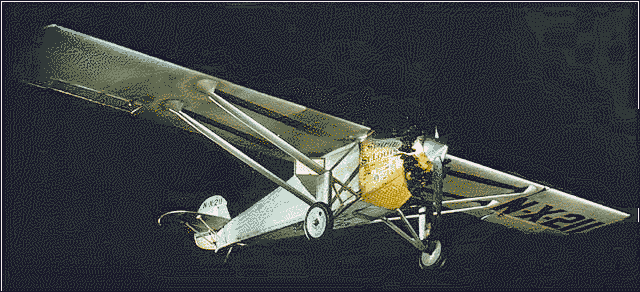
Lindbergh's heroic flight, May 20-21, 1927 thrilled the world and stimulated new interest in aviation. In a more parochial sense, it shook up the aviation community and finally opened its eyes to the safety and practicality of monoplanes. This was one of the major acheivements of aviation history, and it was done with a relatively new style of airplane.
But the Ryan NYP was a one-of-a-kind customized plane, a heavily modified Ryan airmail plane, with a giant fuel tank where the front seats would normally go. Since the fuel tank took the place of the forward cockpit and windshield, the pilot was forced to sit in the back cargo area, and peer through a periscope to see forward -- a dangerous and impractical airplane by any definition. No other NYP was ever built or used. And it was not nearly as pivotal an influence on airplane design as the Bleriot, nor several other less-famous aircraft.
And there was much more at issue in this flight than monoplane technology. The two truly remarkable things about Lindbergh's flight had little to do with the Ryan monoplane itself.
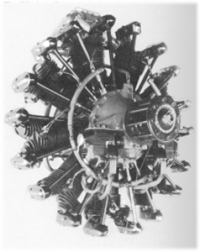
First was the engine. This was a time when airplane engines were fragile, finicky and unreliable. While most aviators trying to cross the Atlantic had set out in multi-engine planes for safety, Lindbergh put all his faith in one, lone, 9-cylinder, Wright "Whirlwind" radial engine. On its modest 220 horsepower, Lindbergh bet his life. If the engine had quit, and Lindbergh were to survive a ditching in the North Atlantic, his survival in the violent, icy sea would likely be measured in minutes. But the new, super-dependable Wright engine kept running for 33-and-a-half hours without fail -- firmly vindicating the Wright Aeronautical Corporation, and its family of advanced, radial engines. This would lead to a revolution in popularity for the dependable Wright engines, which would set the standard for airplane engine designs for the next decade, bringing about far more reliable aircraft.
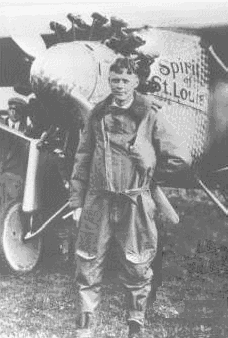
The second truly remarkable thing about the New York-to-Paris flight was the boldness and personal triumph of the lone man who flew it. Indeed, the world was aghast that this young man dared to set out, alone, on one wing, and one engine. While most aviators who attempted to cross the Atlantic tried to do so with a crew of two or more (so someone could always rest), Lindbergh took on the marathon flight, and all its chores, alone. Flying of any kind, in the 1920's, was challenging. Fatigue was quickly inevitable from constantly struggling with awkard controls, primitive instruments, complex manual navigation, and exposure to the elements (no cockpit was well sealed) -- and from being shaken and deafened by the the constant thundering of engine and wind. A three-hour flight could be exhausting just for passengers. For pilots, a 33-hour flight was an unimaginable ordeal.
"Lindy's hop" across the Atlantic from New York to Paris, in 1927, did not do nearly as much for the future of aviation as it did for the entertainment of the public, eager for a hero. The Atlantic had already been overflown by teams of pilots in multiple aircraft -- first by a team headed by British pilots Alcock and Brown, flying seaplanes.
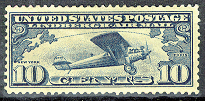
But in the 1920's, the average person was tired of team achievements. Americans and Europeans had been drawn to the crowded cities by industrial employment -- forced to leave behind the independent rural life of farming, which was being taken over by the few with money for tractors. Stuck in lowly jobs where they were quiet nobodys, in an army of factory slaves, ordinary people were thrilled with the idea of a "lone eagle" striking out on his own. The appeal in Lindbergh's achievement was the boldness and independence and freedom of his solo flight -- not the safety and sensibility of it. Although this stimulated some considerable interest in flying, most of the publicity about Lindbergh's flight emphasized the extreme danger of flying -- hardly an advance for aviation.
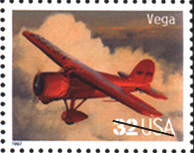
The Lockheed Vega
The Lockheed Vega, first appearing shortly after Lindbergh's famous flight, was certainly an important pioneering influence in its day. Its salient characteristics, unusual for the time were its single, un-braced, "cantilever" wing, exceptional streamlining, and efficient, lightweight, "semi-monocoque" construction -- using the skin of the airplane as its main source of structural strength. The 185-mile-per-hour Vega's speed-and-distance records -- and especially its many altitude records -- showed that the airplane was capable of so much more, if designers and manufacturers would try a little harder.
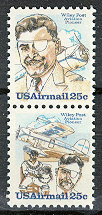 An American aviator named Wiley Post (left) made a career out of superlative accomplishments with the efficient, speedy monoplane -- including flights of discovery into the upper atmosphere, and the first solo flight around the world (with fuel stops). With extraordinary efficiency and speed, the long-legged Vega was one of the first successful commercial passenger planes, and did much to build credibilty for the airplane as a means of transportation.
An American aviator named Wiley Post (left) made a career out of superlative accomplishments with the efficient, speedy monoplane -- including flights of discovery into the upper atmosphere, and the first solo flight around the world (with fuel stops). With extraordinary efficiency and speed, the long-legged Vega was one of the first successful commercial passenger planes, and did much to build credibilty for the airplane as a means of transportation.
But the Vega's all-wood construction seemed a bit imprudent for most commercial aircraft, and its desisgn concept did not overcome the growing aviation-industry trend towards heavy steel-tube-truss construction. It would take later, metal-skinned planes -- like the Northrop Alpha and the Boeing P-26 Peashooter, and the Douglas DC-3, to bring about the wide acceptance of semi-monocoque construction -- nearly universal today. After only three years of production, where 128 were built, the design disappeared from the production lines forever. By comparison, the three "Eight Great Aircraft" of the same period -- the deHavilland DH-4, the deHavilland Moth family, and the Piper Cub -- were all produced and used by the thousands.
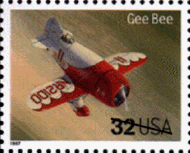 Other Record-Breaking Aircraft
Other Record-Breaking Aircraft
Much the same circumstances and effect have held true for record-breaking and "important first" flights throughout the history of aviation. Further, the success of many of these flights were attributable to factors more important than the aircraft itself, as with the Spirit of St. Louis. Many others, like the endless stream of racing planes in the 1920's and 1930's, generally had a short life, and were soon outclassed (almost none of the racers became widely-used airplanes).
The crop of new jets that abounded in World War II -- Germany's Messerschmitt Me-262 Swallow, Britain's Gloster Meteor, and the United States' Bell P-59 Airacomet -- were all little more than testbeds for the jet engine. None was decisive in itself (though the Me-262 might have been, had Hitler used it wisely), and the latter two were quickly superseded by superior aircraft, while the victorious Allies failed to learn the useful secrets of the Me-262 till they stumbled across them in their own designs.
Supersonic? So what?
As for the X-1, and all other supersonic jets, their achievements are more symbolic than practical. Supersonic flight has generally proven to be worth surprisingly little in the grand scheme of things.
A study of air combat in Vietnam, for instance, where most American fighters had Mach 2+ capability, found that supersonic flight was rare and brief, even in combat -- and usually not all that decisive. At supersonic speeds, identifying and tracking targets became difficult, maneuverability was severely limited, and fuel was very quickly exhausted. Accordingly, modern U.S. military aircraft development today downplays supersonic performance in favor of more practical features, such as the ability to operate from crude airstrips and jungle clearings, long range, stealth, rapid precision targeting, maneuverability, survivability and firepower.
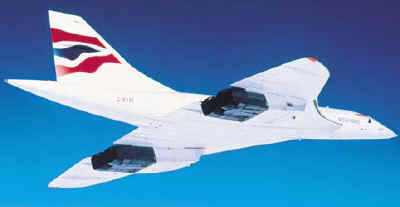
Throughout the Cold War, several jet bombers and fighters were developed for routine, continuous, long-range supersonic flight, each cancelling out the others out as decisive weapons, in the endless global arms race where no one achieved decisive supersonic advantage for long.
Only two other models of airplane have been designed for routine use at supersonic speeds over substantial distances: the SR-71 spy plane and the Concorde airliner (left). Despite the popular fascination with them, neither jet seems to have had much impact on aviation, nor on the world. The Concorde has never carried more than a very tiny fraction of the world's air travelers. And the SR-71 has generally been replaced by spy satellites, and by its own subsonic predecessor, the U-2.
What about airplanes that introduced major new design ideas?
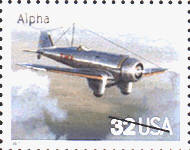
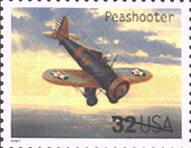 Airplanes that pioneered new concepts -- like the relatively obscure Northrop Alpha, or the Boeing P-26 "Pea-Shooter", and speedy Boeing 247 and 307 Stratoliner airliners -- are a dime a dozen. Many failed to have any immediate impact with their design achievements. Sometimes this was because the plane had shortcomings that outweighed their advances. Sometimes it was because they were quickly outclassed by other aircraft -- independently developed -- with comparable or superior virtues.
Airplanes that pioneered new concepts -- like the relatively obscure Northrop Alpha, or the Boeing P-26 "Pea-Shooter", and speedy Boeing 247 and 307 Stratoliner airliners -- are a dime a dozen. Many failed to have any immediate impact with their design achievements. Sometimes this was because the plane had shortcomings that outweighed their advances. Sometimes it was because they were quickly outclassed by other aircraft -- independently developed -- with comparable or superior virtues.
A true advance in aviation, is generally a popular, successful airplane -- because it has enough of "the right stuff," at the right time, long enough, to actually be useful. What good is retractable gear, for instance, if the plane only carries one person and can't go far? How valuable is a plane that introduces an new concept, if three other companies are about to introduce it at the same time? How much value is in supersonic speed, if the plane can't carry anyone or anything but the pilot?
What about all the great planes of World War II?
Germany's Messerschmitt
Me-109
air-superiority fighter, its Junkers
Ju-87 Stuka
dive-bomber, and its Junker
Ju-52
tri-motor transport were powerful early weapons of the German Luftwaffe. But these planes, when put into combat against modern British, Russian and Amercan aircraft, were quickly outclassed and soon defeated. Though they did much to sustain the evils of German imperialism for six years, they ultimately failed.

The same is true, in Japan, for the infamous high-performance Mitsubishi A6M Zero fighter (left) -- which cleared the way for Japanese conquest in Asia and the Pacific. Within about a year of America's entry into the war, the flimsy Zero, which lacked any armor, was being defeated by stouter American aircraft with comparable performance.
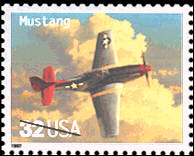 The P-51 Mustang? The Allies would have won World War II without it. It would have been longer and bloodier, but they would have won. The P-51's chief contribution to the war was its ability to provide long-range fighter escort to the big strategic bombers. Though the P-51 was the only fighter with the range to stay with the Allied bombers all the way to their targets in Germany, other planes could have been made to do it. The bulkier, less agile (but lethal) P-47 Thunderbolt was already escorting bombers to Germany's borders, and (with modifications) could have gone farther.
The P-51 Mustang? The Allies would have won World War II without it. It would have been longer and bloodier, but they would have won. The P-51's chief contribution to the war was its ability to provide long-range fighter escort to the big strategic bombers. Though the P-51 was the only fighter with the range to stay with the Allied bombers all the way to their targets in Germany, other planes could have been made to do it. The bulkier, less agile (but lethal) P-47 Thunderbolt was already escorting bombers to Germany's borders, and (with modifications) could have gone farther.
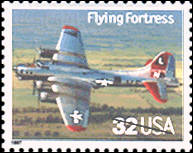 In fact, the awe-inspiring giant Allied bombers of World War II were arguably not decisive in the outcome of the war. First, none was so outstanding that it was "irreplaceable." Certainly the stout, heavily-armed Boeing B-17 Flying Fortress (below) was the best of the bunch. But if it had not existed, its missions could largely have been flown by other American and British heavy and medium bombers. Indeed, some missions were better handled by these other planes.
In fact, the awe-inspiring giant Allied bombers of World War II were arguably not decisive in the outcome of the war. First, none was so outstanding that it was "irreplaceable." Certainly the stout, heavily-armed Boeing B-17 Flying Fortress (below) was the best of the bunch. But if it had not existed, its missions could largely have been flown by other American and British heavy and medium bombers. Indeed, some missions were better handled by these other planes.
Though hastening Allied victory, the big bombers did not clearly change the war's outcome. Even without the bombers, the Allies would have won, according to most military historians, simply because they had Germany vastly outgunned where it counted the most: on the ground. And the Allies' war-production and natural resources were vastly superior to Germany's. Once halted in the West by the British, and under siege in the East by the Russians, Hitler's future turned grim, and the entry of America into the war sealed his fate.
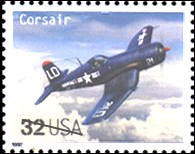
The war in the Pacific was similar. Even though naval and army air power was very important, no one plane in the Pacific decisively changed the course of history -- unless we are to conclude that the vulnerabilities of the Japanese Zero led it to bring unnecessary defeat upon Japan. America's Zero-defeaters, the F6F Hellcat and the F4U Corsair (left), cancel each other out, making neither decisive. Though the high-flying Boeing B-29 Superfortress was a major weapon in the war against Japan, it could have been replaced adequately (if not ideally) by other heavy Allied bombers -- especially after the capitulation of Germany.
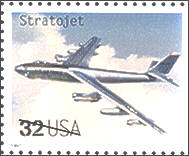 What about the Boeing B-47 Stratojet or B-52 Stratofortress bombers? or the KC-135 Stratotanker? or the Boeing 707 jetliner? All of these had credible competition or substitutes. WEAK ones, but adequate to the real need at the time.
What about the Boeing B-47 Stratojet or B-52 Stratofortress bombers? or the KC-135 Stratotanker? or the Boeing 707 jetliner? All of these had credible competition or substitutes. WEAK ones, but adequate to the real need at the time.
Military history shows clearly that Boeing's military jets gave a significant early Cold War edge to the U.S. -- but were basically in excess of the vast military superiority the U.S. already had to every potential opponent on the globe, including the Soviet Union. The fast, far-reaching Boeing beasts may have helped the U.S., but they were arguably overkill, rather than a pivotal change in the status quo. By the time they were truly required, various credible -- if lackluster -- substitutes existed (including British strategic aircraft) or could have been readily fashioned from existing aircraft.
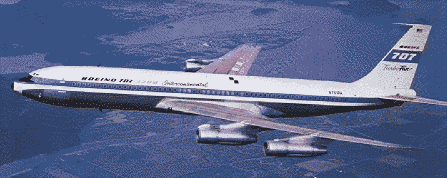 As for those other swept-wing Boeings -- the civilian models? The pioneering Boeing 707 has always had credible competition. It was just the best in its class -- in a fiercely competitive airline industry where marginal superiority is decisive for individual airlines. Had the 707 not existed, though, other early jetliners -- including the Douglas DC-8 , Convair 880 / 990 , deHavilland Comet (whose disastrous flaws were fixed), and the Vickers VC-10 -- might all have stepped quickly into the breach, with other good designs sure to follow. In fact, the 707 was soon superseded by a trio of substantially different Boeing designs: the twin-engined 737 for short routes, the triple-engined 727 for medium-length routes, and the huge, fast 747 for long hauls. All the other jetliners which have followed -- from various countries -- have merely been icing on the cake. Even the outstanding Boeing 747 -- despite its exceptional speed, range and 500-passenger capacity -- has faced credible challenges from smaller craft -- including other Boeings.
As for those other swept-wing Boeings -- the civilian models? The pioneering Boeing 707 has always had credible competition. It was just the best in its class -- in a fiercely competitive airline industry where marginal superiority is decisive for individual airlines. Had the 707 not existed, though, other early jetliners -- including the Douglas DC-8 , Convair 880 / 990 , deHavilland Comet (whose disastrous flaws were fixed), and the Vickers VC-10 -- might all have stepped quickly into the breach, with other good designs sure to follow. In fact, the 707 was soon superseded by a trio of substantially different Boeing designs: the twin-engined 737 for short routes, the triple-engined 727 for medium-length routes, and the huge, fast 747 for long hauls. All the other jetliners which have followed -- from various countries -- have merely been icing on the cake. Even the outstanding Boeing 747 -- despite its exceptional speed, range and 500-passenger capacity -- has faced credible challenges from smaller craft -- including other Boeings.
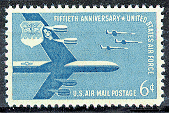
No military aircraft -- other than the Spitfire, Piper Cub, C-47/DC-3, Tiger Moth, and Sikorsky R-4 helicopter -- has been irreplaceably decisive in leaving a lasting MILITARY change upon our world. Although the World-War-I biplane fighters, World War II's B-17 and B-29 bombers, and Japanese Zero and German Me-109 fighters left transient blazes across the pages of history, and the modern jets of today are impressive -- none has ultimately changed the course of history. Some have slowed, accelerated, or briefly detoured the course of history, but only the 5 above could be said to have shaped the course of military history.
As for civilian history -- the facts remain: only the "Eight Great Aircraft" listed above (minus the Spitfire, which was only military) have been decisive in changing CIVIL history.
Which is just fine. We don't want our world to be shaped by machines, do we?
No machine is better than the person at the controls. It is human reasoning and actions that are most important, not human tools. Heroism is not in hardware, but in the heart. One great person is still the better of thousands of great machines. And one great fool can waste any great machine.
The finest machine in the world (aircraft or otherwise) is nothing compared to good leadership, good judgement, and good people. And isn't that the way it should be?
______________________________________
RH. Return to
Return to